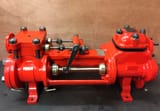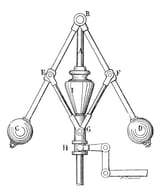>>2938691 (OP)
>what makes a steam pump continuously move?
same principle as magnets.
>I don't get why it wouldn't just equilibrate and freeze still.
because water vapor has entropy and this is very variable, so basicaly, you think you are using vapor, but in reality you are using the same principle of nuclear reactor, but instead using fancy elements, you are using water, heated water molecules they behave at some critical "point" like nuclear reactor molécules. but instead of enriching uranium with complex methods and crazy energy amount, using steam water, you can somewhat easily enrich water with energy directly, so that water molecules behave like crazy when they absorb energy, almost behaving like enriched pluton.
>I'm a fucking idiot and have spent months thinking about this and I'm still not grasping it.
i feel the same way, when i look at gyroscope trying to portrait a inertial motor technology(but i sucks at physics more than chemistry, so yes, i am also a retarded at some physics stuff).i perfectly get what you feel.
>How the hell does a non-rotating mechanical component continue to operate like this?
the best guess i can give, is that the "spiral" or "vortex" concept, is a spiral of satan, or spiral from chronos, or spiral rule, that is a standard at our world reality, or our world cube prison, for some reason, tesla used this "trick" as getting everything on the "spiral" context and managed to create a lot of interesting stuff, like the water valvule that use the vortex of water direction as way to prevent water from going forward, without any mechanical moving parts.
>Nothing is spinning,
i saw spinning but not in the way you see, it´s spinning but not in the axis you are thinking of.
>How the hell does a non-rotating mechanical component continue to operate like this?
look for tesla water valve, the omnidirectional one.
they removed useful content from internet so that you need to pay for it in "universities".




